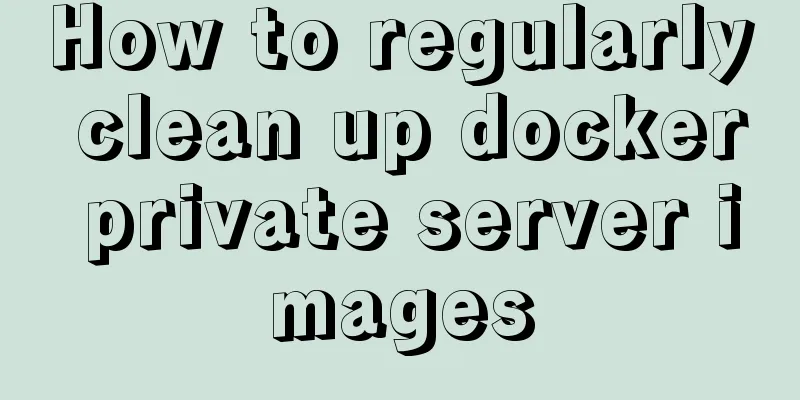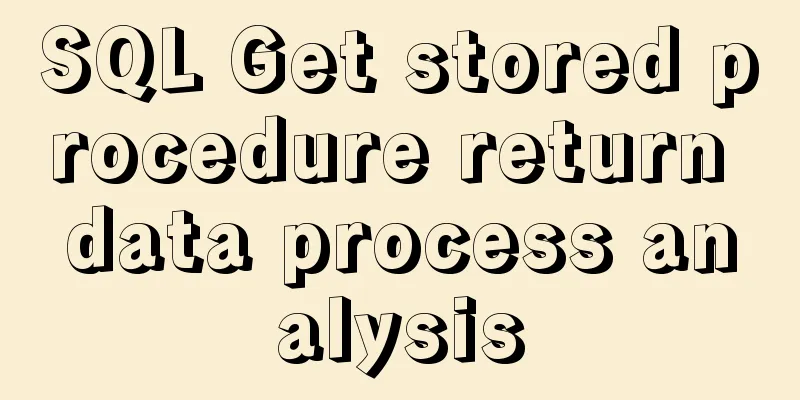How to regularly clean up docker private server images

|
Using CI to build docker images for release has greatly improved everyone's version release efficiency, so the image repository has expanded rapidly. In order to relieve disk pressure, we need to set some cleanup strategies. The cleanup strategies for different Docker images should be different. For example, the latest five versions of images are retained by default, all tool images are retained, and business images are retained for one month. The simple way to keep 5 images is as follows: Download https://github.com/mlabouardy/nexus-cli and use the cli to perform the removal. download wget https://s3.eu-west-2.amazonaws.com/nexus-cli/1.0.0-beta/linux/nexus-cli chmod +x nexus-cli Configuration ./nexus-cli configure
Finally, the .credentials file will be created in this directory # Nexus Credentials nexus_host = "http://nexus.demo.com" nexus_username = "admin" nexus_password = "adminpass" nexus_repository = "your-docker-private-repo" Note that the host and port of nexus filled in the host are not the port of the repo corresponding to docker. View Mirror ./nexus-cli image ls Keep the last 5 ./nexus-cli image delete -name mlabouardy/nginx -keep 5 Comprehensive script clean.sh image_file=image.txt CLI_HOME=/data/nexus3 KEEP_VERSION_NUM=5 $CLI_HOME/nexus-cli image ls > $image_file sed -i '$d' $image_file cat $image_file | while read line do echo "Clean up $line" $CLI_HOME/nexus-cli image delete -name $line -keep $KEEP_VERSION_NUM done Scheduled tasks crontab -e 0 2 * * * sh /data/nexus3/clean.sh Create a nexus task
think As mentioned earlier, different retention strategies should be selected for different images. Of course you can't just keep 5. For example, a tool image may be developed very diligently, but the application may still be an old version. For business images, n releases were made in one day, and n images were added. How to maintain these versions? A rough idea is to standardize the image name, such as adding prefixes such as tools-, biz-, etc. Divided into different repos. For tools, use a separate repo, and for each business, use its own repo. Different retention policies are applied to different repos. Summarize The above is the method of regularly cleaning up docker private server images introduced by the editor. I hope it will be helpful to everyone. If you have any questions, please leave me a message and the editor will reply to you in time. I would also like to thank everyone for their support of the 123WORDPRESS.COM website! You may also be interested in:
|
<<: MySQL 8.0.12 winx64 detailed installation tutorial
>>: JavaScript method to detect the type of file
Recommend
A practical guide to Vue project first screen performance optimization components
Table of contents Vue first screen performance op...
MySQL Server 8.0.13.0 Installation Tutorial with Pictures and Text
Install 8.0.13 based on MySQL 6.1.3. MySQL 8.0.13...
How many pixels should a web page be designed in?
Many web designers are confused about the width of...
Detailed Analysis of Explain Execution Plan in MySQL
Preface How to write efficient SQL statements is ...
A brief discussion on the whole process of Vue's first rendering
Table of contents 1. Vue initialization vue entry...
Create a virtual environment using venv in python3 in Ubuntu
1. Virtual environment follows the project, creat...
Pure CSS to achieve the list pull-down effect in the page
You may often see the following effect: That’s ri...
Database backup in docker environment (postgresql, mysql) example code
Table of contents posgresql backup/restore mysql ...
Mysql NULL caused the pit
Using NULL in comparison operators mysql> sele...
Practical example of Vue virtual list
Table of contents Preface design accomplish summa...
Write a shopping mall card coupon using CSS in three steps
Today is 618, and all major shopping malls are ho...
XHTML Tutorial: The Difference Between Transitional and Strict
In fact, XHTML 1.0 is divided into two types (thr...
Detailed explanation of JSONObject usage
JSONObject is just a data structure, which can be...
A brief discussion on the semantics of HTML and some simple optimizations
1. What is semanticization? Explanation of Bing D...
CSS method of controlling element height from bottom to top and from top to bottom
Let’s start the discussion from a common question...












